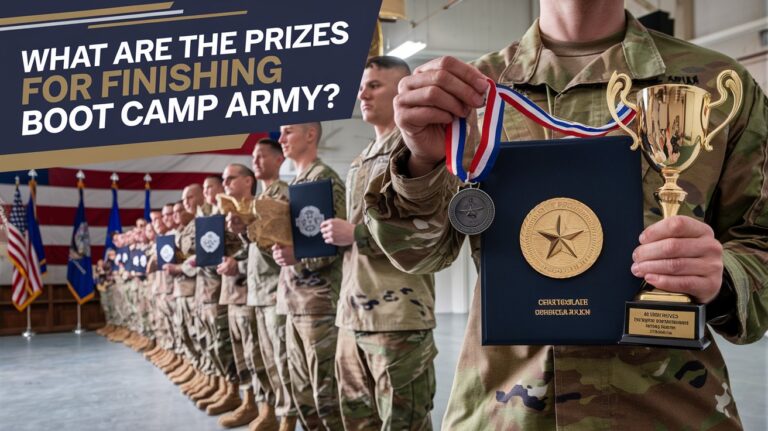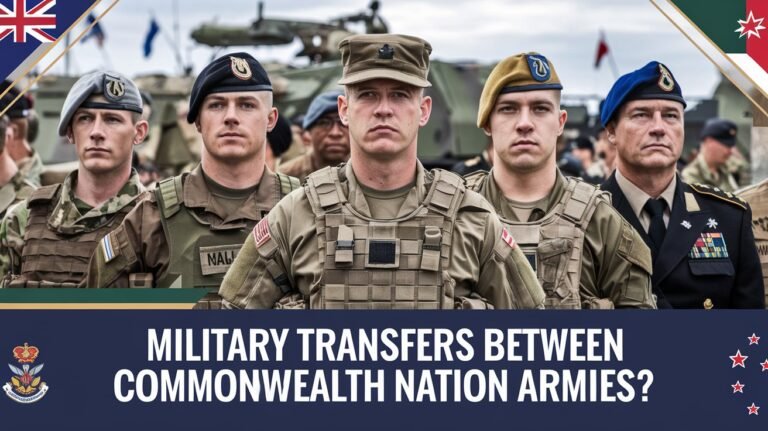Where To Find Army Commissioning Certificate?

Finding your way through military commissions can seem tough. But, the path to Army commissioning certificates is easier than you think. If you dream of becoming an officer, you’re in the right place. We’ll show you the official places and key steps to follow.
Official Sources for Army Commissioning Documentation
To check if someone was commissioned in the army, you can look at several official places. These include military records centers, national archives, and Department of Defense databases.
Military Personnel Records Centers
The National Personnel Records Center (NPRC) in St. Louis, Missouri, holds army service records. You need to write in to get this information, as the law says. The NPRC usually doesn’t charge for basic info, but might if it takes a lot of work.
National Archives Services
The National Archives and Records Administration (NARA) also has a lot of military personnel records. How you get to these records depends on how long ago the veteran left service. You need permission from the veteran or their family to see some records.
Department of Defense Databases
The Department of Defense also has online databases with commissioning source documents and more. But, you might need special permission or clearance to get into these.
| Record Source | Access Details | Response Time |
|---|---|---|
| National Personnel Records Center (NPRC) | Requests must be submitted in writing; limited information provided without cost, but fees may apply for extensive research | Varies based on complexity, record availability, and workload |
| National Archives and Records Administration (NARA) | Access differs based on service separation date (less than or more than 62 years ago); release of information depends on veteran or next-of-kin authorization | Varies based on complexity, record availability, and workload |
| Department of Defense Databases | Requires specific authorization or clearance levels to access electronic records | Varies based on complexity, record availability, and workload |
AMEDD Enlisted Commissioning Program Requirements
The Army Medical Department (AMEDD) Enlisted Commissioning Program (AECP) lets qualified enlisted soldiers get a Bachelor of Science in Nursing (BSN) degree. They also get a commission as an officer in the U.S. Army Nurse Corps. To join the AECP, applicants need to meet certain requirements:
- Applicants must find a nationally accredited nursing school that meets the program criteria. This includes:
- Maximum 24-month program duration
- No more than 1 online class per semester
- Located within 100 miles of a Military Treatment Facility
- Accredited by the Accreditation Commission for Education in Nursing (ACEN) or the Commission on Collegiate Nursing Education (CCNE)
- Maintain a 90% or higher first-time NCLEX pass rate for the past three consecutive years
- Tuition cap of $15,000 per year
- Soldiers must apply to multiple nursing programs and get a conditional or unconditional letter of acceptance. Then, they can submit their AECP application packet.
The FY25 AECP USAREC HQ Health Services Directorate will hold a competitive selection board on 10-13 September 2024. The deadline for packet submission is 1 August 2024. Applicants must be between 31.5 and 34 years old. They also need a minimum GPA of 3.0 and a GT score of 110 or higher.
“The AMEDD Enlisted Commissioning Program is a great chance for qualified enlisted soldiers to get a nursing degree and become an Army officer,” said a recruitment specialist.
Those picked for the AECP will start their nursing program between May-September 2025. They will have to sign a six-year re-enlistment contract. After commissioning, they will have a four-year active-duty service obligation.
Key Components of Military Commission Verification
Checking if an officer’s military commission is real means looking at many forms and documents. It’s important to prove an officer’s status. This is for getting benefits and keeping the armed forces’ honor.
Required Forms and Documents
To verify an officer’s commission, you need certain forms and documents:
- Unconditional or conditional letter of acceptance
- Letter of purpose and intent
- Letters of recommendation
- Prior service records
- Curriculum vitae
- DA Form 705 Army Combat Fitness Test
- DA 5500/5501 (if needed)
- DA Form 2125 Report to Training Agency
- USAREC Form 601-37.60 Post Board Application Checklist
- USAREC Form 601-37.59 AECP Contract
- USAREC Form 601-37.61 Statement of Understanding
- Long Term Health Education Training Form
- Request for Assignment
Authentication Process Steps
The steps to check an officer’s commission are:
- Gather all needed forms and documents
- Send the documents to the right military records centers or national archives
- Check the info against Department of Defense databases
- Get official confirmation of the officer’s commission
Verification Timeline Guidelines
The time to verify an officer’s commission varies. It depends on the situation and the documents needed. Usually, it takes a few weeks to a few months. It’s best to plan ahead and send all documents on time for a smooth process.
| Verification Step | Estimated Timeline |
|---|---|
| Gathering and Submitting Documents | 2-4 Weeks |
| Records Center or Archives Review | 4-8 Weeks |
| DoD Database Validation | 2-4 Weeks |
| Final Certification | 1-2 Weeks |
“Verifying an officer’s commission is a critical step in maintaining the integrity and professionalism of the armed forces. By ensuring the authenticity of military commissions, we can uphold the trust and respect that the public holds for our nation’s officers.”
Where to Find Army Commissioning Certificate
Getting your army commissioning certificate is a big deal in your military career. Finding and getting this document can seem hard, but it’s doable with the right info. It’s key for both active-duty officers and veterans to know where to find their commissioning papers.
Military Personnel Records Centers
The Military Personnel Records Center (MPRC) is your first stop for this certificate. They keep all service members’ records, including commissioning and promotions. By reaching out to the MPRC, you can get a copy of your certificate and other important military records.
National Archives Services
The National Archives and Records Administration (NARA) also has military records, including commissioning certificates. If the MPRC can’t help, NARA might. They can help you find and get the documents you need.
Department of Defense Databases
The Department of Defense (DoD) has databases with info on your commission. You might find your certificate or other important documents here. Working with DoD staff can help you use these resources well.
When you start looking, have all your military details ready. This includes your name, service number, and when you served. With determination and the right help, you can get your certificate and keep your officer credentials safe.
Reserve Component Officer Certification Process
The process for certifying reserve officers, including those in the National Guard, has specific steps. These are set by state military departments and the National Guard Bureau. They make sure the process is fair and complete for all officers.
State Military Department Procedures
At the state level, the military department manages the reserve officer certification. This includes several key steps:
- Reviewing applications for eligibility and qualifications
- Conducting interviews and assessments to evaluate the candidate’s suitability
- Submitting the candidate’s packet for further review and approval
- Coordinating the swearing-in ceremony and issuance of the commission
National Guard Bureau Standards
The National Guard Bureau sets the overall standards for reserve officer certification. They cover important areas like:
- Eligibility requirements, such as age, education, and physical fitness
- Waiver processes for certain disqualifying factors
- Procurement sources, including direct appointments and officer candidate programs
- Temporary federal recognition procedures for National Guard appointments
- Documentation requirements for the federal recognition packet
Following these state and national guidelines ensures a fair and consistent process. This is true for all reserve component officers, including those in the National Guard.
Federal Recognition Documentation Standards
The process for Federal Recognition is outlined in NGR 600-100. This regulation explains who needs Federal Recognition board action and who doesn’t. It also covers the steps for Federal Recognition boards and the documents needed for applications.
Some key aspects of the Federal Recognition documentation standards include:
- Revisions to the effective date of service obligation upon promotion for Chief Warrant Officers 3 to 5.
- Additions to the guidance for applicants enrolled in commissioned or Warrant Officer producing programs.
- Clarifications regarding the maximum age for incoming Aviators to attend the Warrant Officer Basic Course.
- Removal of guidance relating to Army Physical Fitness Test (APFT) results.
- Updates to the USAREC Form 3.3 reference.
- Additions to the guidance concerning separation due to alcohol-related misconduct eligibility.
- Guidance on minor traffic violations and the accumulation of fees and fines.
- Removal of requirements for the Certificate of Eligibility.
- Clarifications on the process for Warrant Officer separation.
- Amendments to the guidance for Time in Grade (TIG) for promotions.
- Removal of specific requirements for Military Education.
- Clarifications relating to Aviation Warrant Officers.
| Requirement | Details |
|---|---|
| Minimum age for appointment | 22 years |
| Maximum age for appointment | 30 years (waivable up to age 35 by State Adjutant General, exception to policy by NGB up to age 40) |
| Applicant’s required service | Minimum 24 months of active service in any federally recognized unit, with at least 12 months in an active ARNG unit prior to application |
| Minimum grade requirement | E-5, E-4 if a graduate of Primary Leadership Development Course |
| Citizenship requirement | United States citizenship |
| Aptitude (GT) score requirement | 110 or higher on the Armed Services Vocational Aptitude Battery |
| Physical fitness test requirement | Passing standard Army Physical Fitness Test (APFT) with certain scores |
| Medical clearance requirement | Must pass Chapter 2 physical examination |
| Security clearance requirement | Minimum final Secret Security Clearance prior to appointment |
| Vacancy requirement | Must have a valid position vacancy |
| Mentorship requirement | Each applicant will be assigned a mentor |
| Rank at appointment | Individuals will be appointed as Second Lieutenants or lower |
| Commissioned service time requirement | Minimum of 10 years commissioned service to retire at the highest rank held |
| Unauthorized waivers | Not authorized for certain provisions |
| Approved requests validity | Must be executed within 60 days of NGB endorsement |
By understanding and following the Federal Recognition documentation standards, officers can have a smooth and successful commissioning process. This ensures they meet the Army’s requirements.
Military Education Requirements for Commission Validation
The U.S. Army has strict rules for officer education to keep the officer corps professional. These rules, found in NGR 600-100, list the courses and training needed for officers. This ensures they meet the standards to hold their commissions.
Basic Officer Leadership Course Records
All new officers must pass the Basic Officer Leadership Course (BOLC). This course teaches the basics of leading troops. It’s a key part of proving an officer’s qualifications.
Professional Military Education Certificates
Officers also need to finish various Professional Military Education (PME) courses. These include the Captains Career Course and the War College. Keeping records of these certificates is vital for validating an officer’s commission.
| Education Requirement | Description |
|---|---|
| Basic Officer Leadership Course (BOLC) | Foundational training program for newly commissioned officers |
| Captains Career Course | Advanced training for mid-career officers |
| Intermediate Level Education | Preparation for senior-level command and staff positions |
| War College | Strategic-level education for senior officers |
Following these education rules is key to validating an officer’s commission. It shows they have the skills to lead well. The Army’s focus on education helps keep the officer corps professional and effective.
Branch-Specific Commission Requirements
Want to be an Army officer? It’s important to know the specialty branch requirements and officer branch qualifications. The Army has many branches, each with its own duties and needs. You’ll need to meet certain educational, training, and experience standards to join.
Let’s look at what you need for different Army officer branches:
- AG Corps: AG Corps officers handle personnel systems in peace and war. They focus on admin and human resources.
- Air Defense Artillery (ADA): ADA officers protect troops and assets from aerial attacks. They ensure safety.
- Armor: Armor officers lead tank and cavalry/forward reconnaissance teams. They’re key in ground combat and mobility.
- Army Aviation: Army Aviation officers use aircraft for combat, communications, logistics, and intelligence. They’re experts in flying.
- Chemical Corps: Chemical officers know a lot about nuclear, biological, chemical, smoke, and flame operations. They keep troops safe from these dangers.
- Dental Corps: Dental Corps officers give dental care to soldiers and their families. They help keep the force ready.
- Corps of Engineers: Combat Engineers have been important since the battle of Bunker Hill. They do tasks like building bridges and destroying them.
These are just a few examples of what you need to be an Army officer. Each branch has its own requirements. You must meet these to be commissioned and serve well in your chosen field. Knowing these requirements is key for a successful Army career.
Post-Commissioning Administrative Procedures
After getting their military commission, officers face many administrative tasks. These tasks help them transition smoothly and grow professionally. The National Guard Regulation (NGR) 600-100 explains these procedures. It covers promotion policies, security clearances, and how to wear insignia.
The regulation talks about how to promote officers to fill vacancies. It includes rules for Federal Recognition boards and handling delays in promotion. It also covers special cases like promoting critically ill officers or those who have passed away.
NGR 600-100 also explains how to calculate time in grade. This is important for moving up in rank. By understanding these rules, new officers can meet all standards and stay respected in the military.
FAQ
Where can I find my Army commissioning certificate?
You can get your Army commissioning certificate from several places. Look at military records centers, the National Archives, and Department of Defense databases. You’ll need to give them some information and follow their process.
How do I verify my military officer credentials?
To check your military officer status, start by collecting your service records and training certificates. Then, reach out to the right authorities and follow their steps. How long it takes can depend on what info they need.
What are the requirements for the AMEDD Enlisted Commissioning Program?
The AMEDD Enlisted Commissioning Program lets Soldiers go to nursing school for up to 24 months. They keep their rank and benefits. You need to have finished Basic Leadership Course, served for 4-12 years, and be under 31.5 years old.
Also, you must have a 3.0 GPA and a GT score of 110 or higher. You’ll need to get accepted into an accredited nursing program that meets certain criteria.
What is the process for verifying a military officer’s commission?
To confirm a military officer’s commission, you need to gather certain documents. This includes service records and training certificates. Then, contact the right authorities and follow their guidelines. The time it takes can vary based on the information needed.
How do I obtain a copy of my Army commissioning certificate?
To get a copy of your Army commissioning certificate, contact military records centers, the National Archives, or Department of Defense databases. You’ll need to provide specific details and follow their process.
What are the requirements for becoming a commissioned officer in the Army National Guard?
To become a commissioned officer in the Army National Guard, you can choose from a 12-15 month traditional program or an 8-week accelerated program. The course has three phases focusing on individual, squad, and platoon training.
It emphasizes military subjects, land navigation, and leadership under stress. You must meet standards in academics, leadership, moral character, medical fitness, physical fitness, and weight to graduate.
What documentation is required for Federal Recognition of a commissioned officer in the Army National Guard?
For Federal Recognition of Army National Guard officers, follow National Guard Regulation 600-100. This regulation outlines eligibility, waiver processes, and the documents needed for the Federal Recognition packet. It includes actions by individuals, commanders, and Adjutants General.
What are the military education requirements for commission and promotion in the Army National Guard?
National Guard Regulation 600-100 details the education needs for promotion. This includes completing the Basic Officer Leadership Course (BOLC) and other Professional Military Education (PME) courses. It specifies the education requirements for each rank from Second Lieutenant to Colonel.
What are the branch-specific requirements for commissioned officers in the Army?
The requirements for commissioned officers vary by branch or specialty. National Guard Regulation 600-100 covers branch transfers, area of concentration (AOC), and functional area designation/redesignation for officers. It includes the role of the Officer Personnel Classification Board and educational stipulations.
What are the post-commissioning administrative procedures for Army officers?
National Guard Regulation 600-100 outlines the procedures after commissioning. This includes promotion policies, computation of time in grade, and personnel security clearance requirements. It also covers promotion to fill unit vacancies and mandatory consideration for promotion.
It details procedures for Federal Recognition boards, delays of promotion, promotion of critically ill officers, and posthumous promotions.






